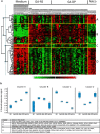How to regulate nonbiological complex drugs (NBCD) and their follow-on versions: points to consider
- PMID: 24065600
- PMCID: PMC3889532
- DOI: 10.1208/s12248-013-9533-z
How to regulate nonbiological complex drugs (NBCD) and their follow-on versions: points to consider
Abstract
The aim of this critical review is to reach a global consensus regarding the introduction of follow-on versions of nonbiological complex drugs (NBCD). A nonbiological complex drug is a medicinal product, not being a biological medicine, where the active substance is not a homo-molecular structure, but consists of different (closely related and often nanoparticulate) structures that cannot be isolated and fully quantitated, characterized and/or described by state of the art physicochemical analytical means and where the clinical meaning of the differences is not known. The composition, quality and in vivo performance of NBCD are highly dependent on manufacturing processes of both the active ingredient as well as in most cases the formulation. The challenges posed by the development of follow-on versions of NBCD are illustrated in this paper by discussing the 'families' of liposomes, iron-carbohydrate ('iron-sugar') drugs and glatiramoids. It is proposed that the same principles for the marketing authorization of copies of NBCD as for biosimilars be used: the need for animal and/or clinical data and the need to show similarity in quality, safety and efficacy. The regulatory approach of NBCD will have to take into consideration the specific characteristics of the drugs, their formulation and manufacturing process and the resulting critical attributes to achieve their desired quality, safety and efficacy. As with the biosimilars, for the NBCD product, family-specific methods should be evaluated and applied where scientifically proven, including sophisticated quality methods, pharmacodynamic markers and animal models. Concerning substitution and interchangeability of NBCD, it is also advisable to take biosimilars as an example, i.e. (1) substitution without the involvement of a healthcare professional should be discouraged to ensure traceability of the treatment of individual patients, (2) keep an individual patient on a specific treatment if the patient is doing well and only switch if unavoidable and (3) monitor the safety and efficacy of the new product if switching occurs.
Figures



Similar articles
-
The EU regulatory landscape of non-biological complex drugs (NBCDs) follow-on products: Observations and recommendations.Eur J Pharm Sci. 2019 May 15;133:228-235. doi: 10.1016/j.ejps.2019.03.029. Epub 2019 Apr 3. Eur J Pharm Sci. 2019. PMID: 30953753 Review.
-
The similarity question for biologicals and non-biological complex drugs.Eur J Pharm Sci. 2015 Aug 30;76:10-7. doi: 10.1016/j.ejps.2015.04.010. Epub 2015 Apr 23. Eur J Pharm Sci. 2015. PMID: 25912826
-
Regulatory challenges and approaches to characterize nanomedicines and their follow-on similars.Nanomedicine (Lond). 2015 Mar;10(4):659-74. doi: 10.2217/nnm.14.189. Nanomedicine (Lond). 2015. PMID: 25723097 Review.
-
Regulatory considerations for generic products of non-biological complex drugs.J Food Drug Anal. 2023 Mar 15;31(1):20-31. doi: 10.38212/2224-6614.3441. J Food Drug Anal. 2023. PMID: 37224550 Free PMC article. Review.
-
Copies of nonbiological complex drugs: generic, hybrid or biosimilar?Drug Discov Today. 2019 Jan;24(1):250-255. doi: 10.1016/j.drudis.2018.08.003. Epub 2018 Aug 4. Drug Discov Today. 2019. PMID: 30086403 Review.
Cited by
-
Reflections on FDA Draft Guidance for Products Containing Nanomaterials: Is the Abbreviated New Drug Application (ANDA) a Suitable Pathway for Nanomedicines?AAPS J. 2018 Aug 20;20(5):92. doi: 10.1208/s12248-018-0255-0. AAPS J. 2018. PMID: 30128758
-
Diluting ferric carboxymaltose in sodium chloride infusion solution (0.9% w/v) in polypropylene bottles and bags: effects on chemical stability.Eur J Hosp Pharm. 2016 Jan;23(1):22-27. doi: 10.1136/ejhpharm-2015-000697. Epub 2015 Aug 12. Eur J Hosp Pharm. 2016. PMID: 26835007 Free PMC article.
-
Tackling the challenges of nanomedicines: are we ready?Am J Health Syst Pharm. 2021 Jun 7;78(12):1047-1056. doi: 10.1093/ajhp/zxab048. Am J Health Syst Pharm. 2021. PMID: 33599767 Free PMC article. Review.
-
Nanoparticles in the clinic.Bioeng Transl Med. 2016 Jun 3;1(1):10-29. doi: 10.1002/btm2.10003. eCollection 2016 Mar. Bioeng Transl Med. 2016. PMID: 29313004 Free PMC article. Review.
-
Non-biological Complex Drugs (NBCDs): Complex Pharmaceuticals in Need of Individual Robust Clinical Assessment Before Any Therapeutic Equivalence Decision.Front Med (Lausanne). 2020 Nov 23;7:590527. doi: 10.3389/fmed.2020.590527. eCollection 2020. Front Med (Lausanne). 2020. PMID: 33330550 Free PMC article. Review.
References
-
- Schellekens H, Klinger E, Mühlebach S, Brin JF, Storm G, Crommelin DJA. The therapeutic equivalence of complex drugs. Regul Toxicol Pharmacol. 2011;59:176–83. - PubMed
-
- Holloway C, Mueller-Berghaus J, Lima BS, Lee SL, Wyatt JS, Nicholas JM, et al. Scientific considerations for complex drugs in light of established and emerging regulatory guidance. Ann N Y Acad Sci. 2012;1276:26–36. - PubMed
-
- Mamidi RNVS, Weng S, Stellar S, Wang C, Yu N, Huang T, et al. Pharmacokinetics, efficacy and toxicity of different pegylated liposomal doxorubicin formulations in preclinical models: is a conventional bioequivalence approach sufficient to ensure therapeutic equivalence of pegylated liposomal doxorubicin products? Cancer Chemother Pharmacol. 2010;66:1173–84. - PubMed
Publication types
MeSH terms
Substances
LinkOut - more resources
Full Text Sources
Other Literature Sources
Medical
Research Materials

